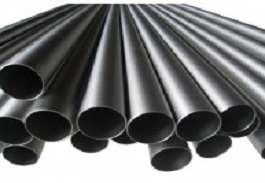Six Strategic Metals in Defense

Join Eric Smith at Stanford Advanced Materials as he dives into the world of strategic metals essential to the military and aerospace industries. In this episode, Eric is joined by Dr. Michael Lee, an expert in materials science, to explore six critical metals that play a vital role in defense technology.
Discover how magnesium, titanium, rhenium, molybdenum, tungsten, and uranium contribute to everything from aircraft engines and rockets to nuclear reactors and military vehicles. Learn about the unique properties that make these metals indispensable in high-stakes environments and how they shape modern defense strategies.
Interested in learning more about strategic metals and their applications? Send an inquiry or connect with us on our social media channels.
Welcome back to another episode of Stanford Advanced Materials! I’m Eric Smith, and today we’re diving into the fascinating world of strategic metals that play a critical role in the military industry. Last time, we explored how cobalt is used in various industries, including EV batteries and everyday applications. Today, we’re shifting focus to six metals that are indispensable in defense and aerospace. Joining us is Dr. Michael Lee, an expert in materials science. Welcome, Dr. Lee!
Thanks, Eric! It’s great to be here to discuss these crucial materials.
Let’s start with magnesium, often referred to as the "defense metal." What makes magnesium so important in military applications?
Magnesium is prized for its light weight and strength. It’s used in everything from spacecraft to military aircraft and missiles. Its ability to produce high heat and light when burned also makes it ideal for flares and incendiary bombs.
That’s fascinating! Moving on to titanium—how is it utilized in the military?
Titanium alloys are known for their heat resistance and toughness. They’re used extensively in aircraft engines, rockets, and even in the latest military vehicles and armor. Its strength-to-weight ratio makes it a key material in aerospace applications.
Rhenium is another metal that’s critical, especially in aviation. Can you explain its significance?
Rhenium is essential for producing high-temperature components like engine blades and thermal shields in rockets and missiles. About 80% of the world’s rhenium is used in aviation, showcasing its importance in high-precision and high-temperature applications.
Let’s not forget molybdenum. How does this metal contribute to military technology?
Molybdenum is used in nonferrous alloys that are essential for manufacturing weapons and high-precision equipment. It’s also critical in building components for warships, rockets, and satellites, thanks to its strength and durability.
Tungsten, known as the "industrial tooth," also plays a significant role in defense. Can you tell us more?
Tungsten’s primary use is in hard alloys and special steels, which are vital for the defense industry. Its ability to withstand extreme conditions makes it indispensable in aerospace, defense, and even the information industry.
Finally, let’s talk about uranium. It’s a familiar name but has some specific military uses, right?
Yes, uranium, especially U-235, is crucial for nuclear reactors and weapons. While nuclear reactors require a lower concentration of U-235, nuclear weapons need at least 90% concentration. Uranium-238 is also used to produce plutonium for nuclear fuel.
That’s an impressive lineup of metals! Thanks, Dr. Lee, for breaking down these strategic materials and their military applications.
My pleasure, Eric. It’s always interesting to explore how these metals shape modern technology and defense.
To our listeners, thanks for tuning in to Stanford Advanced Materials! We hope you found today’s discussion insightful. Don’t forget to subscribe and join us next time for more deep dives into the world of materials science. Until then, stay curious and keep exploring!
